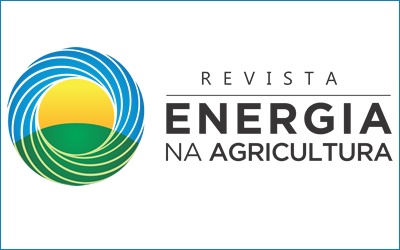FRAGILIDADE AMBIENTAL DA BACIA HIDROGRÁFICA DO RIO CAPIVARA, BOTUCATU-SP
DOI:
https://doi.org/10.17224/EnergAgric.2017v32n1p88-95Resumo
O objetivo deste trabalho foi identificar a fragilidade ambiental da Bacia Hidrográfica do Rio Capivara, Botucatu-SP. Foram utilizados os atributos uso da terra, solos, declividade e geologia através da Combinação Linear Ponderada (álgebra de mapas) em que cada um foi considerado um fator condicionante à fragilidade ambiental. A normalização dos fatores se deu pelas classes de fragilidade com notas variando de um a cinco, de muito baixa à muito alta, respectivamente, e a determinação dos pesos pelo método do Processo Hierárquico Analítico. Os resultados indicaram que a bacia apresentou altos índices de fragilidade, em 90,4% de sua área total, tendo o uso da terra ocupado pelas áreas de pastagens degradadas como o maior vetor de pressão. Somente 9,6% da área total da bacia foi classificada com baixos índices de fragilidade onde estão as áreas com cobertura florestal (nativas e reflorestamento de eucalipto) mata ciliares e as áreas de várzea. Estes índices de alta fragilidade vêm contribuindo para a redução da disponibilidade hídrica da bacia como consequência da falta de planejamento ambiental e exploração desordenada dos recursos naturais.
PALAVRAS-CHAVE: Análise Multicriterial, EASY AHP, SIG, Planejamento Ambiental.
ENVIRONMENTAL FRAGILITY IN CAPIVARA RIVER WATERSHED
ABSTRACT: The aim of this study was to identify the environmental fragility of Capivara River Watershed, Botucatu, Sao Paulo State, Brazil. Attributes like land use, soil, slope and geology were combined through weighted linear combination (map algebra) in which each of them was considered a conditioning factor to the environmental fragility. Factors standardization was given through the fragility classes with grades ranging from one to five, very low to very high, respectively, and the determination of weights by the Analytical Hierarchy Process method. The results indicated that the Capivara River Watershed showed high levels of fragility, with 90.4% of total area, and the land use occupied by degraded pastures was the greatest pressure vector for these high rates. Only 9.6% of the basin total area were classified as low fragility indexes, which are the areas with forest cover (natives and eucalyptus forest), riparian forest and lowland areas. These high fragility indexes have contributed to the reduction of water availability in basin because of lack of environmental planning and uncontrolled exploitation of natural resources.
KEYWORDS: Multi-Criteria Analysis, EASY AHP, GIS, Environmental Planning.
Downloads
Publicado
Como Citar
Edição
Seção
Licença
Esta revista proporciona acesso publico a todo seu conteúdo, seguindo o princípio que tornar gratuito o acesso a pesquisas gera um maior intercâmbio global de conhecimento. Tal acesso está associado a um crescimento da leitura e citação do trabalho de um autor. Para maiores informações sobre esta abordagem, visite Public Knowledge Project, projeto que desenvolveu este sistema para melhorar a qualidade acadêmica e pública da pesquisa, distribuindo o OJS assim como outros software de apoio ao sistema de publicação de acesso público a fontes acadêmicas.





